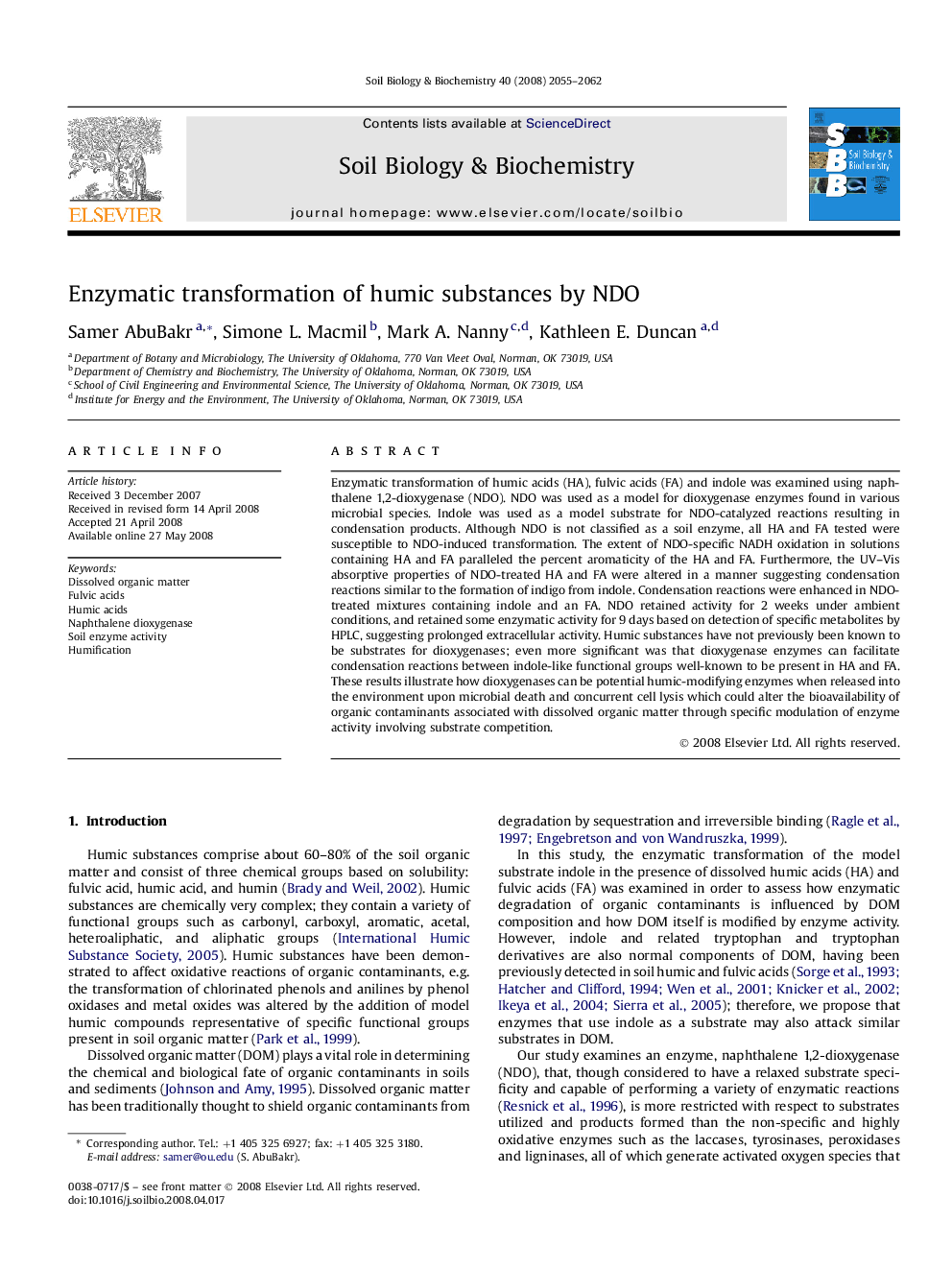| Article ID | Journal | Published Year | Pages | File Type |
|---|---|---|---|---|
| 2026927 | Soil Biology and Biochemistry | 2008 | 8 Pages |
Abstract
Enzymatic transformation of humic acids (HA), fulvic acids (FA) and indole was examined using naphthalene 1,2-dioxygenase (NDO). NDO was used as a model for dioxygenase enzymes found in various microbial species. Indole was used as a model substrate for NDO-catalyzed reactions resulting in condensation products. Although NDO is not classified as a soil enzyme, all HA and FA tested were susceptible to NDO-induced transformation. The extent of NDO-specific NADH oxidation in solutions containing HA and FA paralleled the percent aromaticity of the HA and FA. Furthermore, the UV-Vis absorptive properties of NDO-treated HA and FA were altered in a manner suggesting condensation reactions similar to the formation of indigo from indole. Condensation reactions were enhanced in NDO-treated mixtures containing indole and an FA. NDO retained activity for 2 weeks under ambient conditions, and retained some enzymatic activity for 9 days based on detection of specific metabolites by HPLC, suggesting prolonged extracellular activity. Humic substances have not previously been known to be substrates for dioxygenases; even more significant was that dioxygenase enzymes can facilitate condensation reactions between indole-like functional groups well-known to be present in HA and FA. These results illustrate how dioxygenases can be potential humic-modifying enzymes when released into the environment upon microbial death and concurrent cell lysis which could alter the bioavailability of organic contaminants associated with dissolved organic matter through specific modulation of enzyme activity involving substrate competition.
Keywords
Related Topics
Life Sciences
Agricultural and Biological Sciences
Soil Science
Authors
Samer AbuBakr, Simone L. Macmil, Mark A. Nanny, Kathleen E. Duncan,
